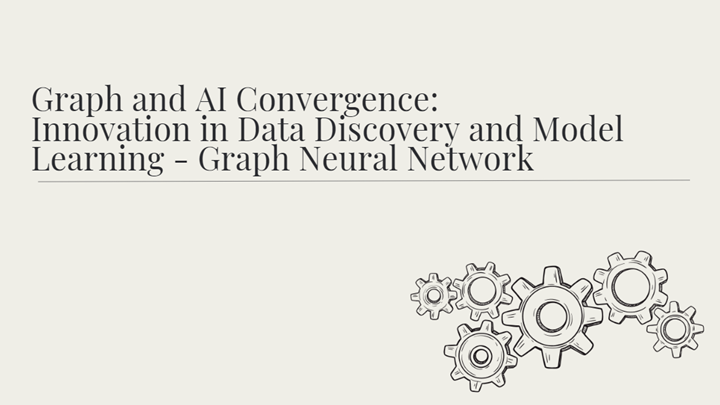
Graph and AI Convergence: Innovation in Data Discovery and Model Learning - Graph Neural Network

Graph AI use case - (2) GNN(Graph Neural Network)
'Graph AI', an artificial intelligence using graph technology, is used in various fields. In particular, Knowledge Graph, which transfers the conceptual relationship between knowledge in the real world, can create a Q&A system by combining natural language processing (NLP), performing functions such as object recognition and relationship extraction.
The other case is to classify and manage nodes with similar characteristics in the network into the same cluster and extract the most influential nodes and their characteristics by learning and embedding the graph's structure.
Among these various areas of graph AI, we would like to discuss Graph Neural Network (GNN) in detail. GNN is known and used as an application of graph data to the Neural Network model of deep learning, which predicts and classifies information on nodes and edges to use them for various tasks.
-
GNN definition
GNN is a deep learning methodology specialized for dealing with graph data. It commonly solves problems in fields such as social networks, molecular structure, traffic networks, recommendation systems, and image/text classification.[1] The growth of its application will increase in the future because it can be applied to all areas of graph data.
The GNN learns the properties of a graph by performing operations by converting the connected relationship of each node into a matrix. Relationships indicate which nodes are associated with which nodes, and node characteristics indicate the information that each node contains.
For example, when a node represents a person, it shows their characteristics, such as age, gender, number of purchases, frequency of visits, etc. As you repeat the operation, each node reflects a broader range of graph information.
In this way, we can combine relationships and node information through GNN. Classification and prediction can be performed based on a wide range of information. In addition, these graph data structures have a flexible schema, which makes them more responsive to changes in their data.
-
Graph Neural Network usage and task
Due to the above advantage, many companies are also introducing GNN. Compared to other existing algorithms, the node's characteristic information and relationship information can be freely utilized, and in particular, can be applied to data that is not previously labeled.

figure 1. Graph neural network applications [2] There are three main ways to utilize GNN: Node Classification, Link Prediction, and Graph Classification.
For Node Classification, you can define which classification the remaining nodes belong to, with only a few nodes defined. It classifies customer groups, documents, and videos among nodes with similar properties.
In general, there is a limitation that artificial intelligence algorithms must have data with labeling. You need to have nodes classified already to learn which groups the new nodes belong to. However, with GNN, the nodes do not have to be organized or labeled.
Link Prediction predicts which nodes can be connected in the future. It is mainly used in the recommendation system, such as recommending friends on social networks or recommending products that are highly likely to be purchased. It is used to predict which product nodes will be connected to in the future. It can also be used to analyze text data, such as extracting context or translating sentences.
Graph Classification performs classification and prediction at a graph level, not at the edge of the node. For example, when a graph shows the structure of a protein, it classifies whether a particular protein is toxic or not.
The Key Factor of High-Dimensional Decision Making, Graph AI
As we discussed earlier, graphs can create strong synergies with AI technology. Even from a technology development perspective, the combination of the two technologies can effectively train models in various AI services/platforms. It also leads to efficiency by minimizing distortion and loss of datasets in the learning process.
Furthermore, based on graph neural networks (GNNs) that can be applied by learning graph structures in depth, we can leverage the rich information of the graph database to solve complex problems in high dimensions.
In other words, the combination of graph and AI technology is the key factor in advanced data analysis and high-dimensional decision-making. The variety of these two powerful tools not only gives you entirely new insights but also new business opportunities, making it easier for businesses to adapt to the ever-changing market environment.
As AI and data analytics enter an era of highly advanced technologies, demand for them is also growing. This is because all the problems and solutions of the world in which we live are becoming more challenging than ever. AI can help with easing the challenge, but there is a limit to its resourcefulness.
The synergy of new solutions that combine AI and graphs will completely change the experience of the world we live in. After the current AI craze, it will leap forward as a market-leading new technology in sorting out legacy solutions.
This is why companies preparing for innovation through AI technology should consider Graph AI, the most realistic alternative to data-based technology.